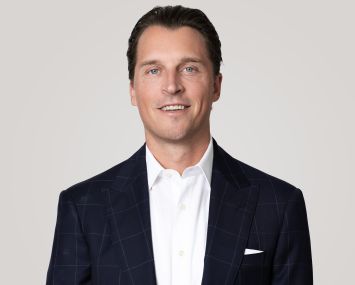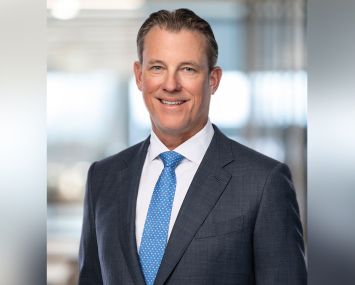Clarion Partners’ Janet Souk Lee On High-Net-Worth CRE Investors
'We’ve just skimmed the surface of that private wealth world.'
By Celia Young March 27, 2024 6:00 am
reprints
Janet Souk Lee has a lot of explaining to do. And investors are listening.
The managing director at Clarion Partners serves as a portfolio manager for the firm’s opportunity zone fund and a non-traded real estate investment trust (REIT). She has flown throughout the country to pitch investment advisers on why their high-net-worth clients should invest in commercial real estate.
In those pitches, she’s found herself explaining everything from the benefits of Clarion Partners’ funds to the definition of a mezzanine loan.
As investors listen — and, more importantly, as interest rates stand poised to drop in the second half of 2024 — Lee expects high-net-worth investment in real estate to grow, particularly in the multifamily, industrial and life sciences sectors. (Office — that’s another story.)
This interview has been edited for length and clarity
Commercial Observer: Did you always know you wanted to get into the real estate industry?
Janet Souk Lee: I wish I could say that since I was 5 years old I always dreamed of becoming a real estate investor. But the truth is, it was a little bit random.
In college, I knew I didn’t want to go into the medical field or become a lawyer. So, along with everybody else, I went into a career in finance. I joined BlackRock in a generic financial reporting-type role and happened to share a floor with the real estate debt team, which seemed a lot more interesting than what I was doing.
They were unfortunately not hiring at the time, but one conversation led to another, and I came across Clarion Partners. I felt extremely fortunate to land a position here back in 2005 as an analyst in the acquisitions group. In 2009, I left for business school.
I thought that I was going to graduate business school and become a developer. I always thought getting your hands dirty and really understanding how to build a building seemed super interesting. I eventually moved out to the West Coast, and worked for both Hines and a small startup.
I got that hands-on experience, and realized it was absolutely not what I wanted to do. It was way too much blood, sweat and tears spent on one building for three or four years without much exposure to anything else. Sitting in city hall, in four-hour design meetings, was not necessarily what I wanted to do with the rest of my life.
I learned a ton but realized that I wanted to come back to the capital side. I rejoined Clarion in 2019.

Can you take me through your role today?
I’m a member of the portfolio management team for our opportunity zone fund as well as our non-traded REIT. Our fundraising really focuses on the private individual.
Launching the opportunity zone fund and non-traded REIT was the first time we really made a big splash into the high-net-worth and individual investor fundraising universe. That world looks very different from the institutional fundraising world. Instead of going to your pension fund, who’s going to put $500 million into one of your core institutional funds, it’s going to 20 different meetings with different financial advisers who may have one or two clients that are going to put in a lot less.
That shift in the fundraising landscape was the biggest challenge and opportunity for me personally and our firm as well, having lived in the institutional space for so long. Partnering with Franklin Templeton, which owns 80 percent of us, was a huge factor.
We leverage their network of salespeople throughout the U.S. They’ve made a big push into the alternatives space, which includes private real estate, and Clarion Partners has been at the front of that. We work through a lot of these channels — the big wirehouses, registered investment advisers — to tap into financial advisers to get their clients to invest with us.
How do you source those investors, particularly in the high-net-worth space?
It’s really about creating the relationships with the platforms — the big banks, the registered investment advisers. Typically, Franklin Templeton has those relationships because they’re a huge distributor of other products like exchange-traded funds or mutual funds.
We’ve spent a significant amount of time over the past five years trying to get on as many of those platforms as possible. A big part of my time and Franklin Templeton sales folks’ time is going out, flying across the country, and having lunch and dinners with these financial advisers.
The spectrum ranges from those who know a lot about real estate and want to understand Clarion Partners, to those who have never invested in any type of real estate, don’t know what a cap rate is, and want to know why adding private real estate is even a good idea for a client’s portfolio.
It’s quite a shift from working in the institutional world. But I think the entire industry is shifting in that direction. We’ve just skimmed the surface of that private wealth world. Most of the big institutions have had their allocation to real estate in the 10 to 12 percent range for a while, and that’s probably slowly increasing. But where we see the tremendous amount of growth is those individual investors that don’t have any private real estate in their portfolio, and educating them to the benefits of adding it. That is a whole universe of wealth.
Is there a particular meeting where you remember having to explain what real estate investing even is?
I’ve had quite a few of those. Going from the institutional world, you take for granted that everyone is familiar with real estate. I remember being at lunch with probably 12 financial advisers. I don’t think any of them were invested in any competitor vehicles.
We were talking about how we’ve been shifting our strategy to lending more at these really attractive double-digit rates. So, you go on, you think that people are understanding you, you talk for 20 minutes, and then someone asks, “What is a mezzanine loan?”
I think it makes you a better investor and communicator at the end of the day, being able to speak from the most basic to the most sophisticated investor.
Who is active in the high-net-worth side of investment?
We do have vehicles that we’ve set up to accept Asian investors, Canadian investors and Latin American investors, but the vast majority of individual and high-net-worth investors are U.S. based.
Have you seen more demand from high-net-worth individuals than in previous years?
High-net-worth investors have always been out there, but this really is the start of them getting more into mainstream private real estate investing. Your ultra-high-net-worth investors have always had access to the one-off deal. In terms of investing in more of a broad, diversified portfolio, I do think that trend is increasing tremendously. We created our non-traded REIT to give the individual, everyday investor access to the same institutional quality private real estate that our $500 million pension fund investors have always had access to.
What are investors looking to add to their portfolios right now?
The majority of investors that we’re coming into contact with — or their financial advisers, rather — are a bit cautious generally on the private real estate market today. Generally, they are looking for a diversified core portfolio. The ultra-high-net-worth individuals typically want a little bit more of a high-octane, high-risk, high-return vehicle.
We’re seeing a little bit more of that in our opportunity zone fund, while the general public that we deal with on a normal basis is looking for that diversifier away from the 60-40 typical stock-bond portfolio.
The general sentiment has been that everyone likes industrial warehouse. Everyone has been pretty bullish on multifamily housing. I consider us a bit ahead of the pack on life sciences. And then office, obviously, is the one that nobody really wants to see in their portfolio unless there is some very significant discount. That’s more reserved for the high-net-worth investors who can stomach that kind of risk.
But not all real estate is created equal. Even within the office sector, we like to own the super-high-quality office where there’s minimal capital, the tenants have to use the space, and they’re in high-growth markets. Over the past 10 years, we’ve been continuously bringing down our office allocation, and just sticking to what we believe to be the best-in-class office space.
There’s a lot of pressure to get these deals right. How do you navigate that pressure, particularly as a woman in a male-dominated industry?
I’ve gotten a lot of great advice from people throughout my career, both men and women. I always try to remember those conversations — know what you want to do in your career and know where you’re heading in terms of direction. But you have to find a balance.
I think of things through the lens of a marathon, not a sprint. You may not be able to make every single meeting and you have to be OK with that. That was a huge struggle for me, especially early on in my career. As a woman, you want to prove yourself, you want to make sure everyone thinks you’re the hardest worker. But, over almost 20 years of working in the industry, you have to realize you’re not going to be perfect to everyone.
On the personal side, I talked about it being a marathon. We view core real estate very similarly. We’re looking at it from that long-term lens. The majority of our funds and accounts are long term, and that’s how we underwrite things. We have five macro themes that really guide all of our real estate investment-making decisions.
The first is demographics: You have a wave of Gen Zers and millennials that are entering prime renter age, and the way that they rent and spend money is very different than prior cohorts. You also have aging baby boomers, and that has implications for everything from housing, to life sciences, to medical offices.
You have technology that’s pervasive. I personally do not know how I would survive, especially as a busy professional and working mom of two children, without Amazon. Technology is going to continue to drive change throughout our industry.
You have de-globalization, where you’re seeing trade shift away from just China and getting diversified. That will affect the way that we invest, especially across the warehouse industry. And then you have housing. The undersupply and affordability issues have implications on the multifamily housing that we will be investing in.
The last one is resiliency. As we’re living in a more competitive environment, where you need to attract the top tenants that are going to stay at your buildings, it’s important to have greener, healthier buildings.

Do you have a role on the debt side? Are you particularly interested in financing certain properties?
In our non-traded REIT platform, specifically, we are pretty active on the debt side. What has worked out really well for us is that shift from equity to debt over the past 12 to 18 months.
We saw interest rates rise pretty rapidly, equity valuations have gone up and down — and more recently in the downward direction — and I think what has really differentiated our performance is that focus on debt. As interest rates probably settle out and start coming down, we’ll probably reshift our focus a bit more to the equity side.
We’re constantly balancing debt and equity, where the debt is giving us a little bit more of that steady income to pay our dividends, and the equity side is more of where our growth is coming from. Our high-conviction sectors on the debt side, both within the non-traded REIT portfolio as well as across the firm generally, continue to be multifamily housing, industrial warehouse and life sciences. I would also add self-storage and necessity retail to those high-conviction sectors today, and we’re continuously looking at lending opportunities.
As an investor, you never want to completely red line anything. There’s always a small, small possibility, but I will say, generally speaking, adding any type of office exposure — even on the debt side — is not one of our areas of focus right now. It would have to be a very, very compelling opportunity.
What are your expectations for the rest of the year? How do you expect interest rates to impact investment, particularly from high-net-worth individuals?
That is the billion-dollar question. Our house view is that it settles in that mid-3 percent range over the long term. I think it’s going to take a little bit of time to get there. We are cautiously optimistic that the Federal Reserve is going to start to slowly cut interest rates in the second half of this year.
Where the real estate market shakes out is going to be largely dependent on that. As long as we do end up where the majority of the real estate industry is thinking — a mid-3 percent long-term rate — I think the overall industry will be in a position where we’ll start seeing people more comfortable transacting.
The bid-ask spread was way too high over the past 12 to 18 months to make sense of transacting in most cases. Our expectation is that toward the end of 2024 that’s going to narrow, and you’re going to start to see investment, volume and activity pick up. That goes hand in hand with your potential investors, your high-net-worth investors and your institutional investors all getting the confidence to come back into the market again.
Do you have any plans to capitalize on the distress and maybe snatch up some foreclosed office properties?
I would say the majority of our business is core and core-plus investing. We’ve definitely had the conversations about more of that opportunistic investing and taking advantage of some of the dislocation that’s going on in the office market. But our long-term lens is around those five macro themes, and what the 10-year horizon is going to look like. Even taking advantage of a short sale in the office sector at a great deal is probably not something that we’re super focused on.


